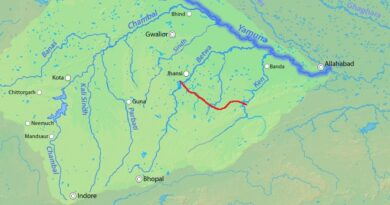World Sanskrit Day
Context:
The Prime Minister, Shri Narendra Modi has extended his wishes on the occasion of World Sanskrit Day and shared his greetings with the people in Sanskrit.
About World Sanskrit Day:
- Sanskrit language is believed to be originated in India around 3500 years ago.
- It is considered to be one of the oldest languages in the world.
- Sanskrit is one of the languages of Indo-European family. Indo-European is the name given to the family of languages to which Sanskrit belongs.
- Sanskrit in literary terms is classified into two different periods, the Vedic and Classical. In the Vedas sacred texts, Vedic Sanskrit is found mainly in the Rig Veda, the Puranas and the Upanishads. The Vedas were composed in the period 1000 to 500 BCE.
- In 1969, World Sanskrit Day or Sanskrit Diwas was first time celebrated.
- It is considered a scientific language and is believed to be the most computer-friendly language.
- The language, however, is not entirely dead. A village in the Shimoga district of Karnataka, called Mattur, is believed to have preserved the language. From shopkeepers to children and street vendors, everyone in the village speaks in the ancient classical language of Sanskrit.
- The only Sanskrit newspaper in the world is called ‘Sudharma‘. The newspaper has been published since 1970 from Mysuru in Karnataka and is also available online.
- Some of the eminent Sanskrit authors are Panini, Patanjali, Adi Shankaracharya, Ved Vyas, Kalidas etc.
- Sanskrit is one of the classical language declare by Government of India
As per the Eighth Schedule of the Indian Constitution, we have 22 languages. In 2004 it was decided by the Indian Government to proclaim Indian Languages meeting certain requirements as “Classical Language”.
Classical Languages of India Criteria
The idea of Classicism had its origin in Europe. According to information provided by the Ministry of Culture in the Rajya Sabha in February 2014, the guidelines for declaring a language as ‘Classical’ are listed below. The Government tracks the following criteria to define the eligibility of language to be considered for classification as “classical language”:
- Extraordinary antiquity of its early transcripts or verified history over a period of 1500-2000 years.
- A body of ancient literature or texts, which is considered a valuable heritage by generations of speakers.
- The literary tradition should be original and unique, and certainly not hired from another language community.
- The classical language and literature being diverse from modern, there may also be a discontinuity among the classical language and its later forms or its sprouts.
Classical languages in India
Currently, six languages enjoy the ‘Classical’ status: Tamil (declared in 2004), Sanskrit (2005), Kannada (2008), Telugu (2008), Malayalam (2013), and Odia (2014).
How are the Classical languages promoted?
The HRD Ministry noted the benefits it provides once a language is notified as a Classical language:
- Two major annual international awards for scholars of eminence in classical Indian languages
- A Centre of Excellence for studies in Classical Languages is set up
- The University Grants Commission is requested to create, to start with at least in the Central Universities, a certain number of Professional Chairs for the Classical Languages so declared.
Source: PIB


